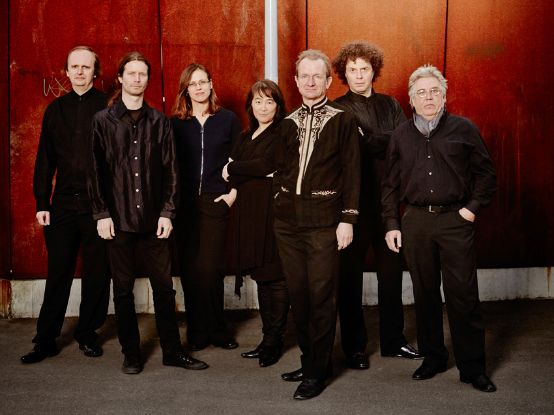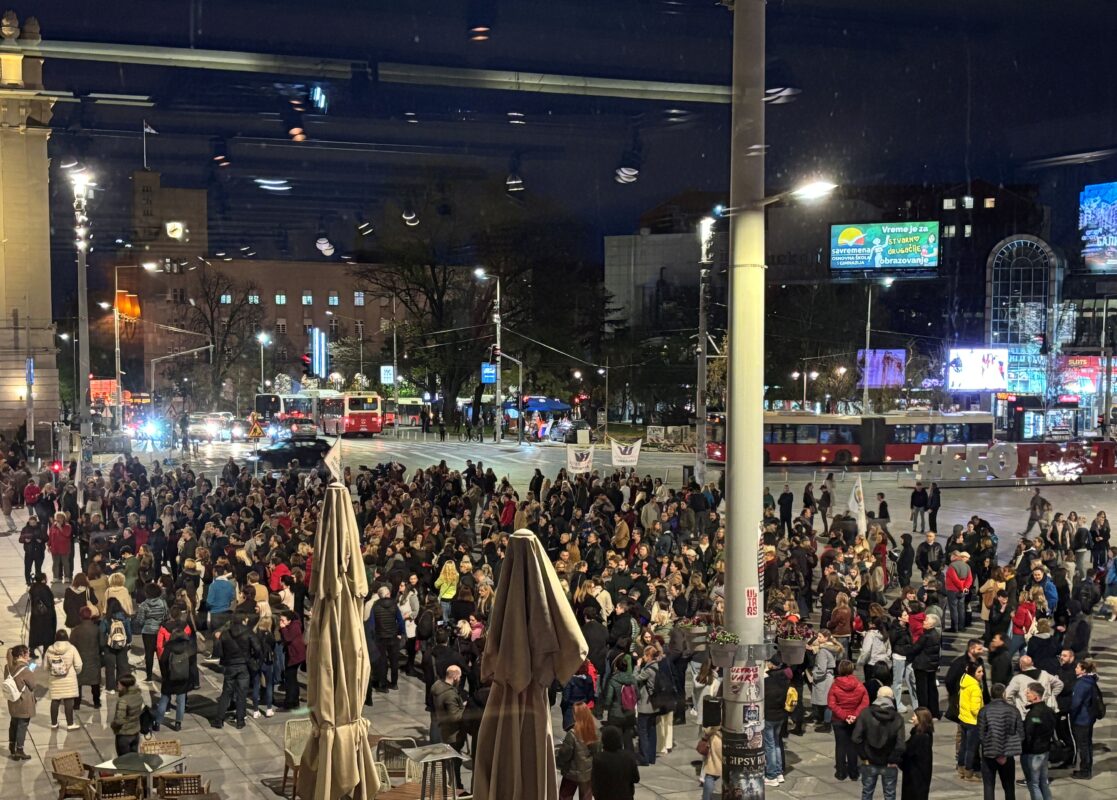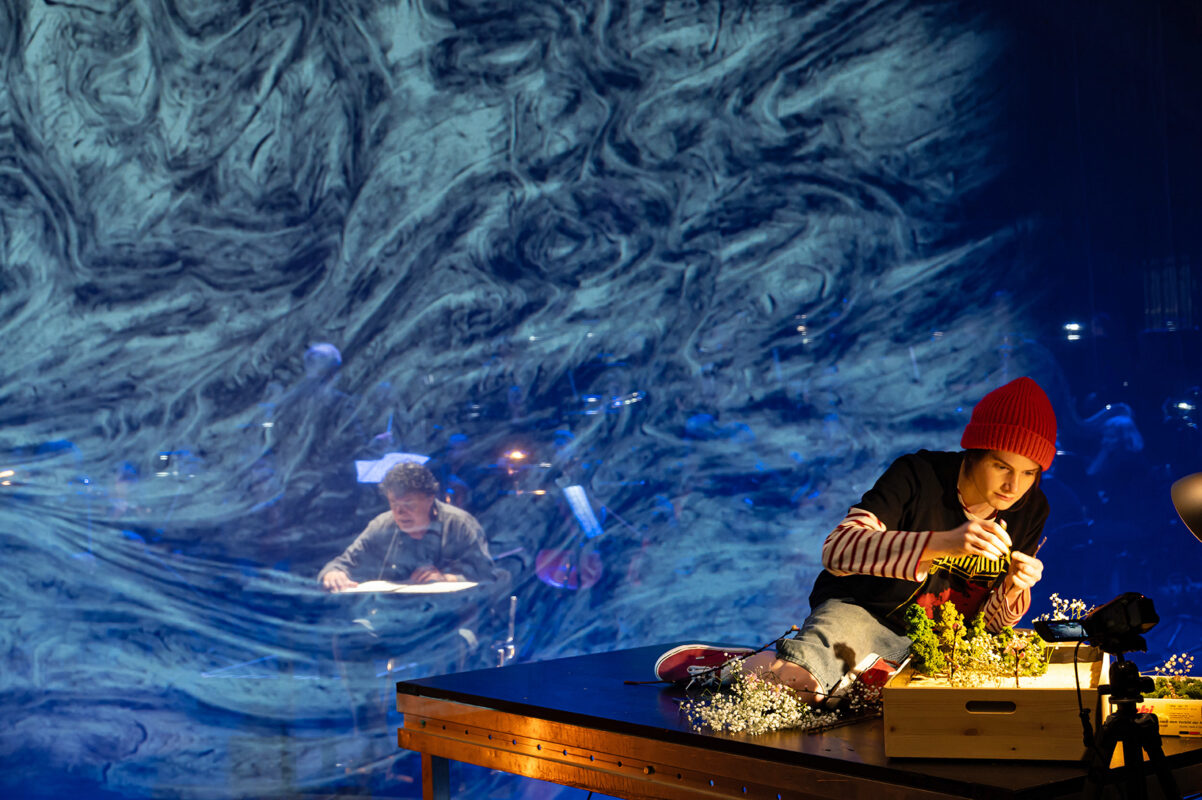Victims of overpowering mothers
As part of a six-part tour, the Lucerne composer Thomas K.J. Mejer presented his music theater "Macula matris" in German- and French-speaking Switzerland - albeit in a problematic reduced version.

Actually, everything was meant to be quite different: the Lucerne composer and saxophonist Thomas K.J. Mejer had composed his seventy-minute music theater piece for a large (industrial) hall in 1995/96. Macula Matris was conceived. The audience was to move freely between seven stations, at each of which a musician and a dancer were to perform and a spoken text was to be heard. This was not financially feasible. Now, twenty years after its creation, the work has been performed in concert at various locations in Suisse Romande and German-speaking Switzerland - with a detour to Fribourg in Baden. This report is based on the guest performance in Basel's Gare du Nord on December 5, 2015, in which the originally intended spatial effect had to be almost completely dispensed with. Only the speaking voices can be heard from loudspeakers around the audience; the musicians sit next to each other in front of a video screen on which the dancers can be seen.
The title of the piece Macula Matris (birthmark) here does not mean the physical characteristic, but the imprinting of each person by their mother, which the psychoanalyst C. G. Jung, to whom Mejer explicitly refers, described as the "mother complex". Jung distinguishes between different forms of this complex, and Mejer's selection of literary texts follows this Jungian typology. It is about an adult woman who withers away mentally under the total control of her mother, about a homosexual mama's boy, a womanizer, a nymphomaniac; eroticism and sexuality are thus essential themes of the play. This information about the content comes from a subsequent mail from the composer; in the performance, the texts can only be partially understood, they are often whispered or inaudibly formed with the lips. While they would run side by side in the originally intended hall, so that one could at least follow a single one, here they overlap and become a diffuse linguistic noise. They are not printed in the otherwise full-bodied program booklet, nor are they even referenced. This means that the "play about mind, body and soul, about cause and effect, about expression and analysis" announced in the same booklet is largely incomprehensible to the audience. This does not make sense.
The text, musicians and dancers are each aspects of a single figure that is isolated from the others and trapped within itself. This is expressed in the music and in Angelika Ächter's choreography. The score for flute(s), clarinet, bassoon (also contrabassoon), trombone, harp, cello and percussion gives each instrumentalist a narrow repertoire of sound gestures, which they repeat almost manically. In the vastness of a space in which the soundscape changes for the listener with every step, this music fans out again and again. On the podium of the Gare du Nord, the seven solo parts added up to a largely uniform mash of sound at first hearing, almost without highlights and without contrasts that could have created tension. A wild timpani roll, a loud outburst from the contrabassoon, a striking short dialog between harp and xylophone aroused attention here and there. The assignment of the instruments to the texts and the dancers was also difficult to make out. Even the committed playing of the Basel ensemble Phoenix, rehearsed by Jürg Henneberger, did not help. It would definitely have been worth accepting the changed acoustic situation and rewriting the score on this basis.
The choreography, on the other hand, is a successful new version. Like the musicians, Ächter has the dancers repeat striking body movements. The video artist Stefan Bischoff has made her work the basis of an independent work of art consisting of highly aesthetic images. In soft beige and brown tones, reminiscent of old magazine photos, he makes the dancers appear as if from nowhere, has them act side by side, superimposes their movements and slowly fades them out again. He shows the almost naked bodies as objects of desire in accordance with the texts. One man flexes his powerful back muscles, another strokes his face and upper body in self-indulgence, a woman lets her shapely breasts vibrate and plays with her long hair. The four women and three men are clearly assigned to the four female and three male speakers. Bischoff's film is thus the best part of a very ambitious, but half-heartedly unconvincing project.
Trailer for the production: www.maculamatris.com/trailer.html








